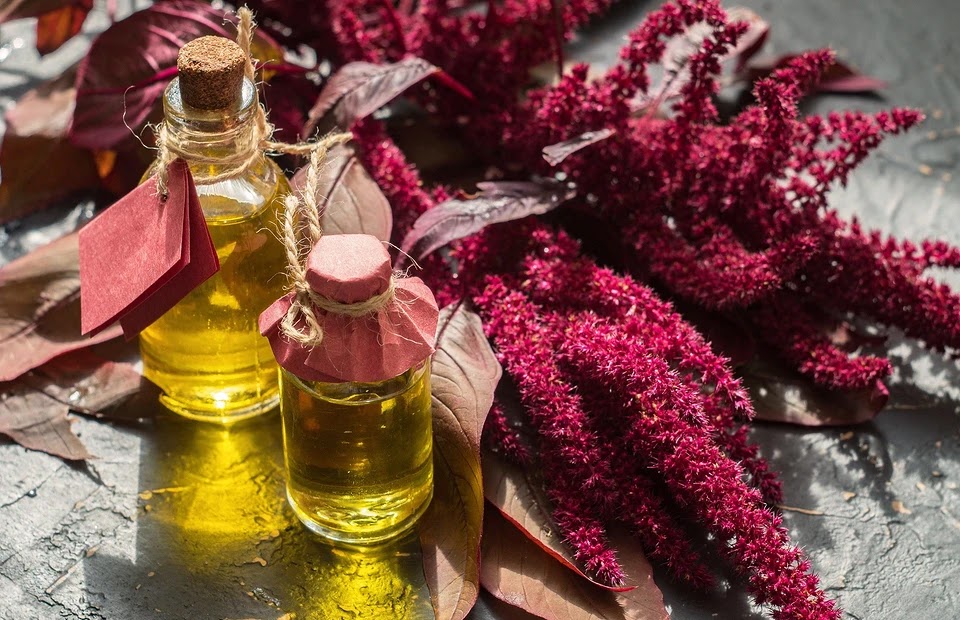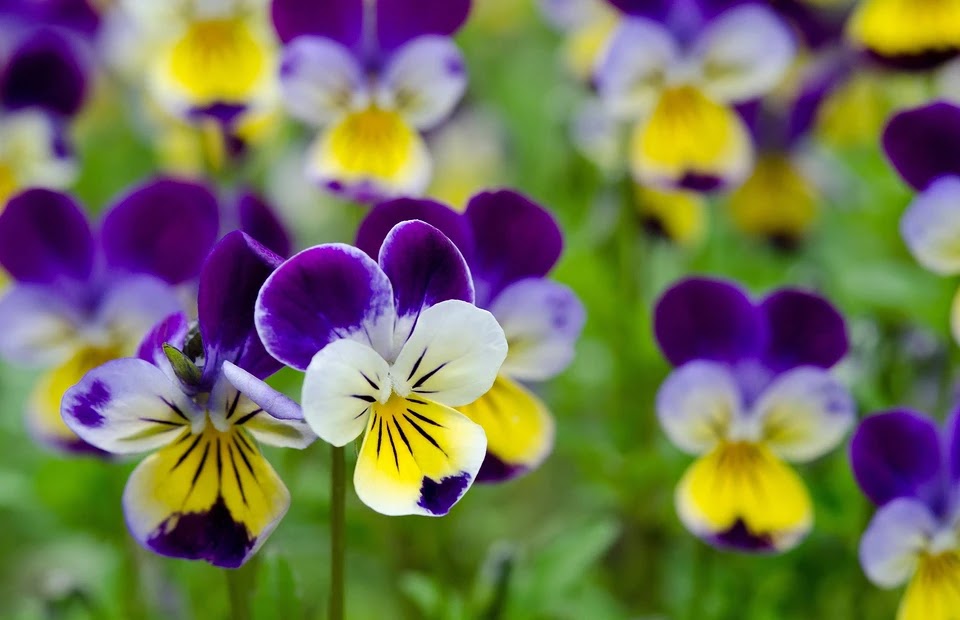Why spend money on expensive medicines when there are so many painkillers, wound healing, antipyretic and choleretic drugs growing on the site that not every pharmaceutical plant produces!
Of the 500 thousand species of plants that bloom and grow around us, science recognizes about 300 as healing. But this does not mean that the rest are useless for health: it’s just that the medicinal properties of most of them have not yet been studied. But experts who have studied the length and breadth of the flowers and herbs that we cultivate in our dachas as decorative ones declare with all responsibility that in fact these plants are able not only to please the eye, but also to relieve a variety of ailments.
Marigold
Someone plants a calendula in a flower bed, and someone - between the beds, so that pests do not spoil the potato-carrot. But marigolds can save not only the harvest, but also our health! Not without reason, in all pharmacopoeias, the epithet “medicinal” is attached to their name.
In flowers that adorn gardens until winter with bright stars - from pale yellow to bright orange, withHealing essential oil, coloring matter calendulin, carotenoids - biochemical precursors of vitamin A (there are twice as many of them in orange petals as in yellow ones), vitamin C, phytoncides, saponins, organic acids.
Even in ancient times, calendula was used to prepare infusions for gargling with colds and sore throats, with its help they healed wounds and bruises, got rid of purulent processes, furunculosis, skin rashes, lichen, thrombophlebitis and edema . The active anti-inflammatory and antiseptic effect of marigolds, their ability to soothe pain and relieve irritation are valued today. To prepare the infusion, you need to pour 1 tbsp. a tablespoon of flowers with a glass of boiling water, let it brew for 30-40 minutes, strain.
Advice. Finely chopped calendula flowers can be added to salads and simmering soups. And you can prepare a special additive: hold the flower baskets in a windy shade, dry them in a moderately hot oven, place them in a cotton bag and rub them into a powder, sift and pour into a glass jar. Put it in the dough, season the soups.
Amaranth

The grain sent by God was called amaranth by the Aztecs. For 8 thousand years, it was both the main crop of the Indians of South America and Mexico, and their main cure for all ailments. Amaranth is very unpretentious, grows well even in dry weather, blooms beautifully and produces several crops of seeds from one stem over the summer, and it can reach a height of three meters! True, young shoots of amaranth drown out weeds, so take care of weeding.
Fresh, stewed, boiled and fried young shoots with leaves are eaten. Salads, snacks, side dishes can be prepared from them, and the seeds can be used as an additive to cereals, bread and confectionery: such pastries acquire a pleasant nutty taste and do not get stale for a long time.
Due to the high content of rutin (vitamin P), amaranth strengthens the walls of blood vessels, and the complex of fatty acids - arachidonic and linolenic protects against atherosclerosis. Amaranth is especially valued for its complete protein (in the leaves of some species it is up to 58%, and in the seeds - 20%). In terms of amino acid composition, it is close to the animal, and in terms of digestibility it surpasses corn and even soy.
Advice. If you fast or are on a vegetarian diet, pay attention to amaranth! 200 g of its leaves not only cover the body's daily protein requirement by 10%, but also increase the absorption of protein contained in other products. From leaves and young shoots, which, by the way, like calendula flowers, can be pickled for the winter, salads, soups, borscht, mashed potatoes are prepared. Stewed amaranth with browned onion and egg is also good.
Rhubarb
In the warm season , stomach problems are not uncommon; Tangut rhubarb helps to cope with the problem. This powerful perennial plant with a well-developed root system in the first year after planting forms only a basal rosette of leaves, and in the second or third year flower-bearing stems grow - powerful, straight, slightly branched, 2-3 meters high! Inside they are hollow, covered with reddish spots. The leaves are also huge - up to 75 cm! In June, rhubarb throws out dense, branched half-meter panicles with small white-pink flowers, becoming a decoration of the garden.
The therapeutic effect of rhubarb root is due to the presence of two complexes of anthracene derivatives and tannins that are opposite in their action. The former increase intestinal peristalsis, having a laxative effect 8–10 hours after taking rhubarb root juice or its infusion, so they are recommended to be consumed at night. And the latter have astringent, fixing and antiseptic properties.
But how then to get the desired effect? It appears to be dose dependent. In a small amount (up to 0.2 g) rhubarb has a fixing effect, and in a large amount (0.5–1 g) it has a laxative effect. True, if you use it as a laxative constantly, the body gets used to it and stops responding properly: then the dose of rhubarb is increased. But just do not confuse Tangut rhubarb with the usual garden rhubarb, growing on every personal plot. This type of rhubarb has only a mild laxative effect.
Before using herbal infusions and decoctions, do not forget to consult your doctor. So, rhubarb cannot be treated with pregnant women and patients with cholecystitis, as well as with bleeding from the digestive system and intestinal obstruction. In addition, many herbs are contraindicated for allergies, individual intolerance, pregnancy.
Advice. Use only young rhubarb stalks harvested in May. During this period, they are tastier - sour, like Antonovka, due to the abundance of malic and citric acid. In summer, the petioles become coarse and accumulate an excess of oxalic acid, which is not useful for everyone: it should not be used for kidney diseases and gout. By the way, young rhubarb stalks make a good filling for pancakes and pies, and the leaves are good for cabbage rolls.
violets

Pansies (they are tricolor violets) can be found in every garden. Not only you and I like them: the violet was the favorite flower of Shakespeare and Shelley, Goethe and Turgenev. This symbol of fidelity and love, modesty and innocence served as the emblem of Ancient Athens, and was minted on coins in Genoa. Golden violet - the main prize of the poetic competition, held annually in the Middle Ages in Toulouse.
Nature really endowed a modest flower with untold wealth: it contains essential oil, flavonoids, alkaloids, saponins, vitamin C, carotenoids, tannins. Thanks to this healing cocktail, violet has a wide range of therapeutic effects - it relieves inflammation, cleanses the skin, has a diuretic and diaphoretic effect, improves immunity, and helps with arthritis, gout and rheumatism.
Advice. For skin problems (all sorts of rashes, irritation, urticaria, dermatitis ) you can take violet baths (300–700 g of grass per bucket). It's a pity to translate so many colors? Then just wash the affected areas of the skin with a concentrated infusion of violets (2 tablespoons per glass of boiling water).




0 Comments